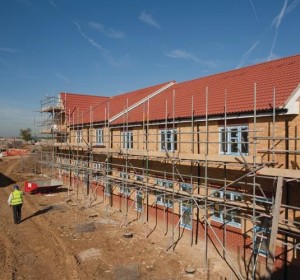
Property prices in Spain have risen by 0.8 per cent in the past 12 months
Data published at the weekend by the European Union’s statistical office Eurostat has revealed that Spain’s housing market is one of the steadiest on the Continent…
Ranking annual house price increases, the Eurostat data confirmed that Spanish property prices have risen a modest 0.8 per cent over the past 12 months. This price rise is the first sustained annual increase in Spanish property since 2008, and points to greater confirmation that the housing market in Spain is now one of the most stable in Europe.
In contrast, property prices in France fell by 1.1 per cent over that same period, while in the UK prices have soared by an average of 10.2 per cent in a year – beaten only by Ireland (12.5 per cent) and Estonia (14.5 per cent).
A few years ago such rapid price rises would have been seen as cause for celebration, but the burnt fingers of the recent property boom-bust cycle should be wary of touching such a ‘hot’ market again, which is why Spain’s more sober statistics are actually more encouraging.
The data was published on the same day that a study by British employment organisation TUC revealed that the pay squeeze on UK incomes is the severest since Victorian times. So not only are real wages in the UK falling faster than they have done for nearly 150 years, housing is becoming more and more unaffordable even for those on good salaries.
Factor in the small, shoebox homes that have become the norm in the UK – England now ‘boasts’ the smallest properties per square metre in Western Europe – and the situation is becoming increasingly untenable for many young Brits unable not only to get a foot on the property ladder, but struggling to pay basic rent.

New-build homes in the UK are the smallest in Western Europe, and among the most expensive
Of course, news of rising property prices is usually well received by current UK homeowners, especially those who may harbour dreams of freeing up some equity for investment in a property overseas.
Hence, the current market imbalance could prove ideal for would-be buyers hoping to purchase a property in Spain. Spanish house prices have stabilised since 2010, and with prices beginning to rise steadily, now is a good time to investigate the market.
France, on the other hand, still requires a painful round or two of price corrections, according to a study by the OECD. In looking at long-term averages, the OECD found that property prices in France are 29 per cent too high compared to rents, and 28 per cent too high compared to average salaries.
The Economist conducted a similar study in September and found that French property prices are around 30 per cent too high.
In some European countries, rising property prices are a natural response to a well-performing economy, with both Estonia and Sweden (where property prices have risen 8.7 per cent in the past year) enjoying solid fiscal years.
Further down, countries like the Netherlands, Norway and Czech Republic have seen property price rises of between 0.7 – 1.3 per cent, which is similar to Spain and indicative of a sustainable market.
In the negative column, Slovenian property prices suffered the most in the past year, falling 9.8 per cent, while homes in Italy are 4.8 per cent cheaper this year than they were in 2013.
The EU average was a property price rise of 1.7 per cent, putting Spain’s price rise just below average. In the Eurozone, however, prices were flat over the past 12 months.
 en
en



 Vlaams-Nederlands
Vlaams-Nederlands
0 Comments
Leave a Comment
DISCLAIMER
The opinions and comments expressed by contributors to this Blog are theirs alone and do not necessarily reflect the views of VIVA Homes Under the Sun Ltd, any of its associated companies, or employees; nor is VIVA to be held responsible or accountable for the accuracy of any of the information supplied.
Have you got something to say?